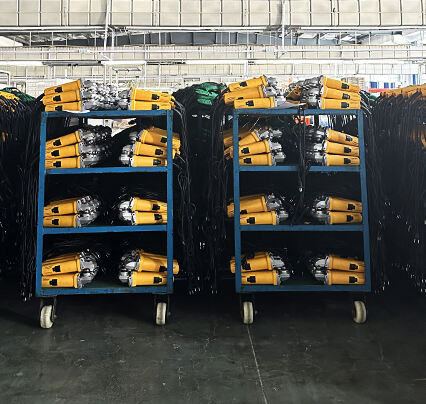Content
Angle grinders are popular power tools in all sorts of workshops, construction sites, and DIY projects. They are designed for tasks such as cutting, grinding, or polishing metal or other materials. And there are a variety of angle grinders on the market these days--if you 're not careful, finding one that matches the specific requirements of your project can be quite an effort. This guide will help you sort out all these specifications, project requirements, and other factors for an informed decision.
Understanding the Specifications of Angle Grinders
When buying an angle grinder, the spec sheet is critical:
A. Power Source: This device is able to draw power from a line and generate its own electricity. Corded grinders provide constant power but mobility is limited; cordless versions afford freedom without needing battery charging and generally are less powerful.
B. Motor Power and Speed: Grinders are rated in watts of power and RPM (rotations per minute). Higher wattage and RPM are suitable for heavy-duty tasks such as cutting or grinding metals.
C. Disk Size and Arbor Diameter: The disk size determines how much a job can be done, while the arbor diameter (center hole for mounting grinding disks) is important in compatibility of disks.
D. Gear Type: Single speed grinders have just one operating speed, while variable speed models can be adjusted. This allows more control in different applications.
Assessing Your Project Needs
Consider the following project needs:
A. Type of Substance and Hardness: Whether it is metal, stone, or concrete, the grinder must match the hardness of the material being grinder.
B. Specific Tasks: You will need grinding, cutting, or polishing capabilities to the job. Different types of work may require different kinds of grinders.
C. Diameter of Workpieces and How Much Area You've Got to Play With: The grinder's size and diameter of its disk should match these two quantities.
D. Frequency of Use: For somebody who only sporadically uses a grinder, an inexpensive model may serve their needs. But for frequent users, a more robust and solid machine is in order.
User Comfort and Safety Come First
User comfort and safety take precedence:
A. Tool Size and Balance: A lighter balanced grinder tires the user less and gives the operator better control.
B. Safety Features: Look for features like disc brakes, dust exhaust systems, and a solid safety guard system to protect against kickback and cutting or grinding debris.
C. Ease of Use: The farther the guards on a grinder are from their work, the less effort they take to operate. It is also easier to control and manage.
D. Noise and Vibration: Choose a grinder with low noise and vibration levels for user comfort and compliance with industrial safety standards.
Reading Angle Grinder Reviews and Ratings
What We Learn from Reviews and Ratings
A. Customer Review: Shared experience of actual grind users, its practical performance;
B. Expert Review: Professional reviews offer a lot of information and detailed comparison.
C. Buy Guide: Look at multiple reviews before buying to contrast different model features and maker brands.
Testing Out Angle Grinders
Check this as part of your pre-purchase inspection:
Rentals: Rent out a grinder and compare it to your project—purchase if only the results are up to par.
Return Policy: Make sure that in case the grinder does not meet your expectation, easily return/exchange it if needed.
Summary
Choosing a good angle grinder in an upcoming purchase means passing through the specifications of the tool, discovering what is provided and what you may need for completing your job, analyzing the comfort and safety of use features, learning about any intended performance feature worth mentioning and assessing prices. Considering all these factors thoroughly gives us the machine that will drive the requirements you have at high efficiency. Most importantly, keep in mind: the right tool for the job will make you more productive and also provide a safer and a considerably more enjoyable working experience.

